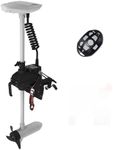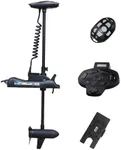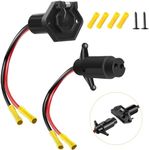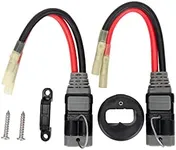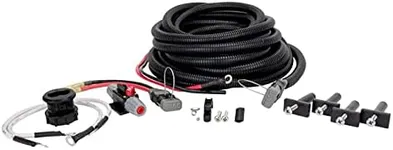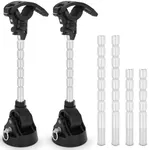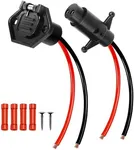Buying Guide for the Best Canoe Trolling Motors
Choosing the right canoe trolling motor can significantly enhance your paddling experience, making it easier to navigate waters and enjoy your time on the water. When selecting a trolling motor, it's important to consider various specifications that will determine how well the motor meets your needs. Understanding these key specs will help you make an informed decision and ensure you get the best fit for your canoeing adventures.ThrustThrust is the measure of how powerful the trolling motor is, usually expressed in pounds (lbs). This spec is important because it determines how well the motor can move your canoe through the water, especially in challenging conditions like strong currents or windy weather. Thrust values typically range from 30 lbs to 100 lbs or more. For small canoes on calm waters, a lower thrust (30-40 lbs) may be sufficient. For larger canoes or rougher waters, you might need a higher thrust (50 lbs and above). Consider the size of your canoe and the typical water conditions you encounter to choose the right thrust level.
Shaft LengthThe shaft length is the distance from the motor head to the propeller and is crucial for ensuring the propeller stays submerged while in use. This spec is important because an incorrect shaft length can lead to poor performance and potential damage to the motor. Shaft lengths generally range from 30 inches to 60 inches. For canoes, a shorter shaft (30-42 inches) is usually adequate, but you should measure the distance from the mounting point to the waterline to determine the best length. Ensure the propeller is submerged by at least 12 inches for optimal performance.
VoltageVoltage indicates the power requirement of the trolling motor, typically 12V, 24V, or 36V. This spec is important because it affects the motor's power and battery life. A 12V motor is suitable for light use and smaller canoes, while 24V and 36V motors provide more power and are better for larger canoes or longer trips. Consider how often and how long you plan to use the motor. For occasional short trips, a 12V motor may suffice. For frequent or extended use, a higher voltage motor will offer better performance and efficiency.
Control TypeControl type refers to how you operate the trolling motor, with options including hand control, foot control, and remote control. This spec is important because it affects your convenience and ease of use. Hand control is straightforward and ideal for smaller canoes, while foot control allows for hands-free operation, which can be beneficial for fishing. Remote control offers the most flexibility, allowing you to operate the motor from anywhere in the canoe. Consider your preferred style of operation and how you plan to use the motor to choose the right control type.
Mount TypeMount type refers to how the trolling motor is attached to the canoe, with options including transom mount and bow mount. This spec is important because it affects the motor's performance and ease of installation. Transom mounts are easier to install and are suitable for most canoes, providing good control and maneuverability. Bow mounts offer better control in windy conditions and are preferred by anglers for precise positioning. Consider your canoe's design and how you plan to use the motor to choose the appropriate mount type.
Battery LifeBattery life indicates how long the trolling motor can run on a single charge, which is crucial for planning your trips. This spec is important because it determines how far and how long you can travel without needing to recharge. Battery life depends on the motor's voltage, thrust, and your usage patterns. For short, occasional trips, a motor with a shorter battery life may be sufficient. For longer or more frequent trips, look for a motor with a longer battery life to ensure you don't run out of power on the water. Consider your typical trip duration and distance to choose the right battery life.






